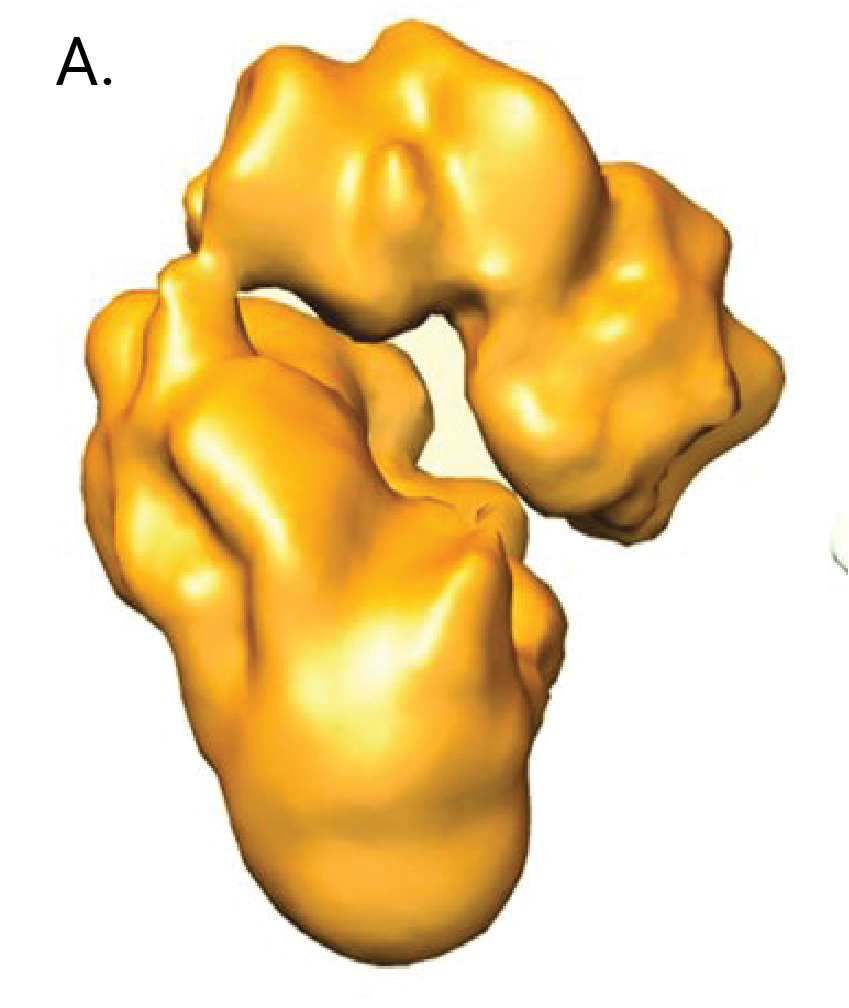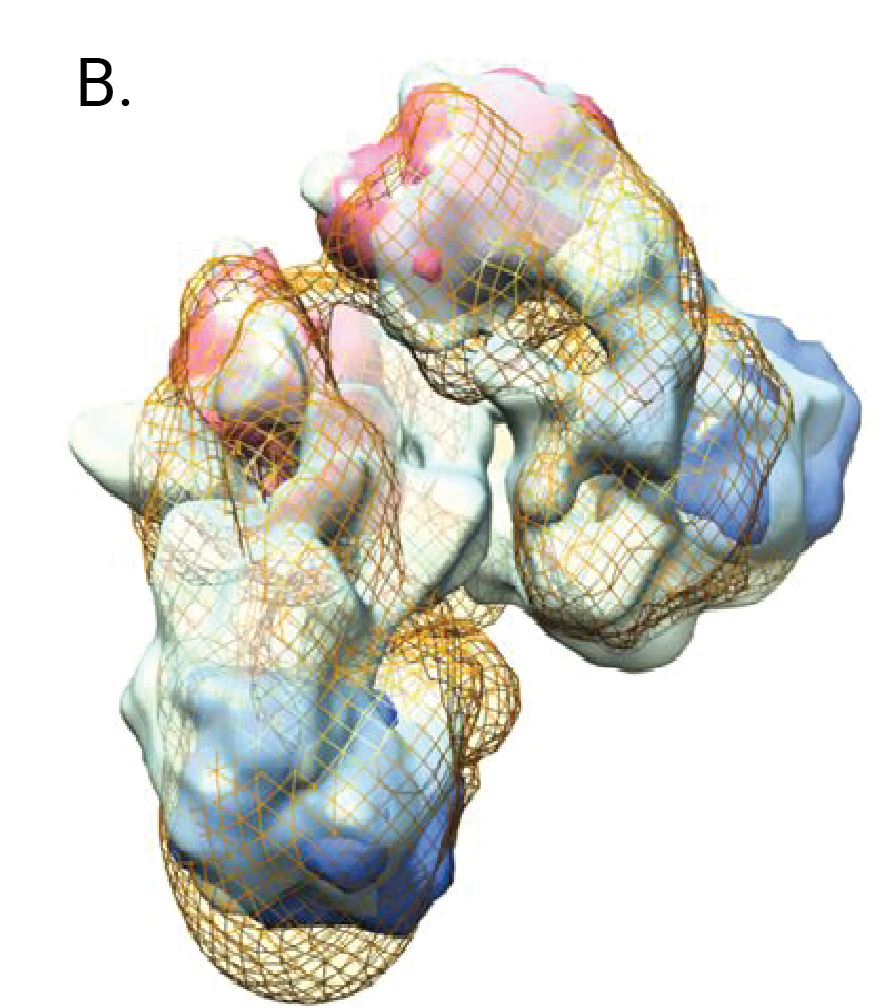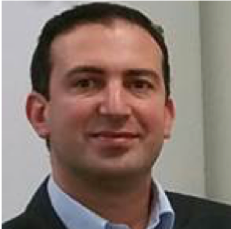KCC2 is a neuron specific K+-Cl− co-transporter that controls neuronal chloride homeostasis. The expression level and the activity of the KCC2 transporters influence intracellular chloride concentration and the efficiency of GABAergic and glycinergic transmission. KCC2 is critically involved in many neurological diseases including brain trauma, epilepsies, autism, and schizophrenia.

Despite significant accumulated data on the biology and electrophysiological properties of KCC2, its structure, oligomeric arrangement and functional relationships remain poorly understood.
The protein was produced, solubilised and stabilised in the presence of calixarene detergent. Protein production and specimen preparation were optimised for single particle electron microscopy. A dataset of negatively stained particles was recorded and analysed to determine the oligomerisation state of the protein and reconstruct a 3D envelope of the protein.
Electron microscopy (EM) revealed that KCC2 exists as monomers and dimers in solution but not as higher homo-oligomers. Monomers are organised into head and core domains connected by a flexible linker. Dimers are asymmetrical and display a bent S-shape architecture made of four distinct domains and a flexible dimerisation interface.
The work serves as a starting point for a single particle cryo-EM study to better understand KCC2 functional domains. This information will help to delineate common mechanistic features within the cation chloride co-transporters family and enable new drug design to treat specific neurological disorders.


(A) Electron microscopy of the KCC2 dimer. (B) Proposed fit of the KCC2 monomers within the dimer indicates an asymmetric interaction. Each monomer is composed of two domains shaded blue and red, respectively.
I was delighted to have access to the expertise and dedicated capabilities at the Instruct centre in Strasbourg, France. Thanks to this collaborative effort, we were able to describe the first molecular architecture of potassium chloride co-transporter KCC2. We have also collected high resolution data using their state-of-the-art facilities. We are confident that this work will enable structure-based drug discovery soon. This type of collaboration with Instruct is a game-changer and will be certainly duplicated for other highly druggable targets.
Anass Jawhari, CSO, CALIXAR

